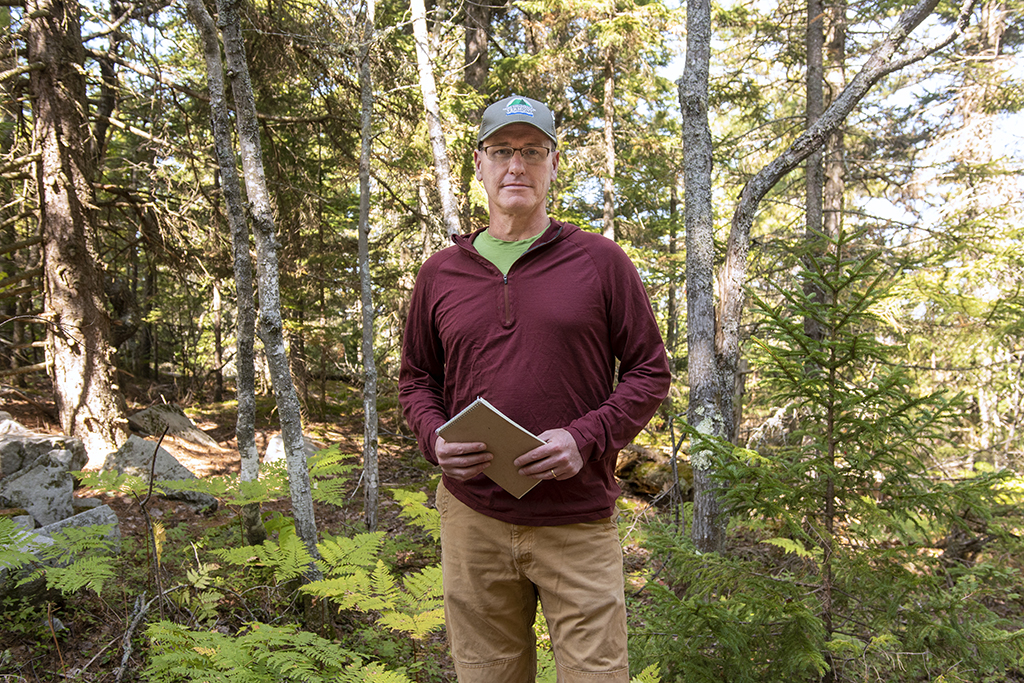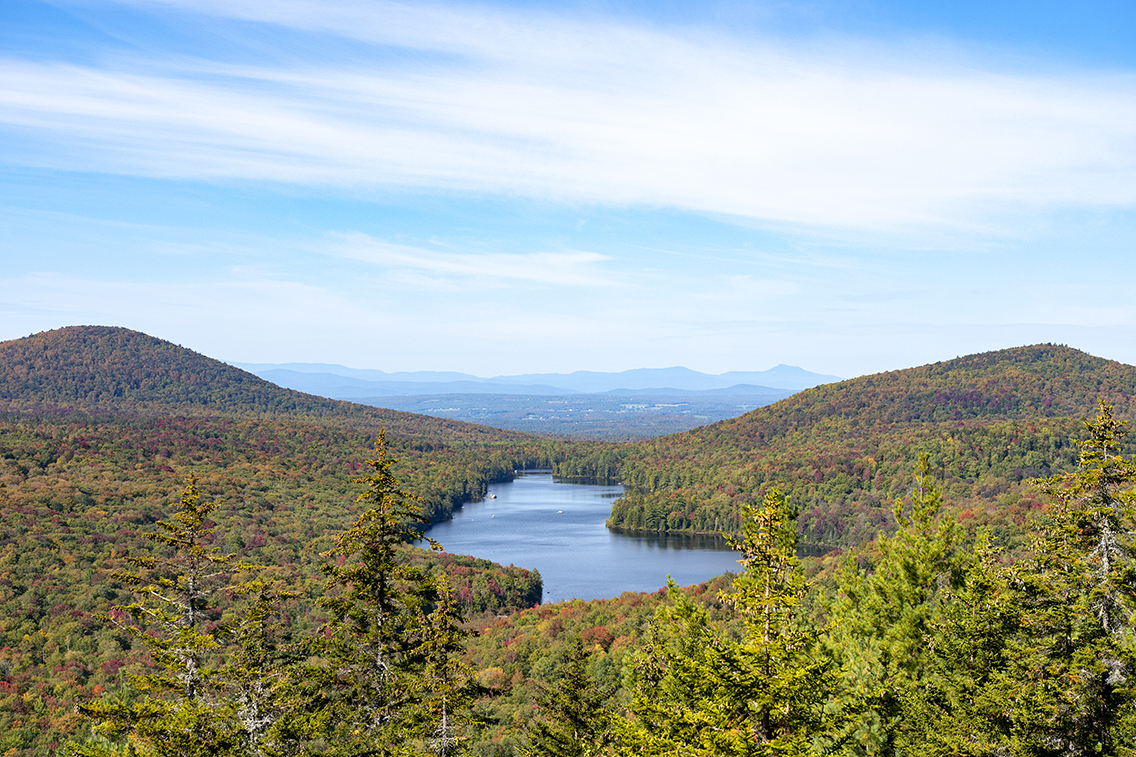
Happy Vermonters: Forester Mike Snyder Gets Primed for Vermont’s Most Colorful Season
September 25, 2019
Mike Snyder is the go-to guy for Vermont fall foliage updates.
As commissioner of Forests, Parks, and Recreation, Snyder is known as Vermont’s Chief Foliage Forecaster. He provides weekly foliage reports to the media and the state tourism office in September and October.
Last week, Snyder hiked up to the scenic overlook at Owl’s Head Mountain in Groton. The leaves were just starting to turn red, yellow, and gold across the 26,000-acre Groton State Forest, where Owl’s Head rises above Kettle Pond.
With changes in daylight, cooler temperatures at night, and sunny days, Snyder says Vermont is in good shape for a colorful fall season.
“Trust the trees—they’ve been doing this for millions of years,” Snyder says when asked if fall foliage is on schedule this year. “I don’t control the weather. But this is an annual reminder of what we’re rightly world-famous for. It also reminds us how lucky we are that Vermont has been stewarded by forests and farm owners all these years. We need to give it up for the trees and the people who have stewarded this landscape and kept Vermont forests strong. That’s why Vermont looks the way it does.”
Vermont is one of the most heavily forested states in the country and has the highest proportion of maple trees. Vermont is 75 percent forested with 4.46 million acres of forest.
The red maple is a favorite among foliage seekers, as is the sugar maple. Snyder says other trees that put on a nice show during the fall include ash trees, as well as birch, cherry, aspens, tamaracks, sumacs, and red oak.
“That’s why I like to say that Vermont has the world’s best foliage. For New York, Maine, and New Hampshire, it’s really a race for second place,” he says. “It’s all in fun. But between our high diversity of forest types, species, and composition mixes, as well as our sweet soils, our weather and all the different vantage points to see foliage, we have a credible claim.”
The Science of Fall Foliage
 -The view from Owl’s Head in Groton State Forest in mid-September.
-The view from Owl’s Head in Groton State Forest in mid-September.
During the spring and summer, the leaves are where most of the foods necessary for the tree’s growth are manufactured. Leaves start out yellow when they bloom in spring. Chlorophyll, the chemical responsible for giving leaves their green appearance and converting light to energy during photosynthesis, dominates the landscape in the spring and summer. But when temperatures change and daylight shortens, the chlorophyll breaks down and reveals the yellow or orange chemicals, known as carotenes or carotenoids, that were there all along.
Other leaves produce chemicals called anthocyanins from built-up sugars. These chemicals produce a red pigment that can combine with green pigments left from chlorophyll and display different shades of red.
“The leaves changing color is tied to environmental cues, day length, and weather,” Snyder says. “You’ll see the leaves change first in the north and at higher elevations, and then the colors work their way south down into the lower elevations.”
A Forester and Outdoorsman at Heart

Before joining the Department of Forests, Parks, and Recreation as commissioner in January 2011, Snyder was the Chittenden County forester for more than 13 years. Previously, he worked in forest science and ecological research, land surveying, and forest management in New Hampshire, New Mexico, and Sweden.
Snyder was born in Harlem, New York, grew up in New Hampshire, and attended UVM for his undergraduate and graduate degrees in forestry. Now living in Stowe, the busy commissioner doesn’t get outside during the week as much as he would like.
But on the weekends, he can be found hiking, camping, gardening, backcountry skiing, or hunting. (He also plays harmonica in a band. “The best part of playing harmonica is that I get to hang out with musicians,” he jokes.)
When it comes to Vermont forests, some of Snyder’s favorites are Mount Mansfield State Forest, Sterling Town Forest, and Putnam State Forest. For him, there’s no better place to be than Vermont—especially in late September and early October when foliage is at peak color.
“I would put it out there that fall foliage in Vermont is always pretty darn good,” he says. “Sometimes it even blows your mind when it seems these colors should not exist in nature.”
Sign up for weekly foliage reports from the Vermont Department of Tourism, and share your foliage observations on social media using #FindYourPeakVT.
-Happy Vermonters is a series about life in Vermont.




No Comments